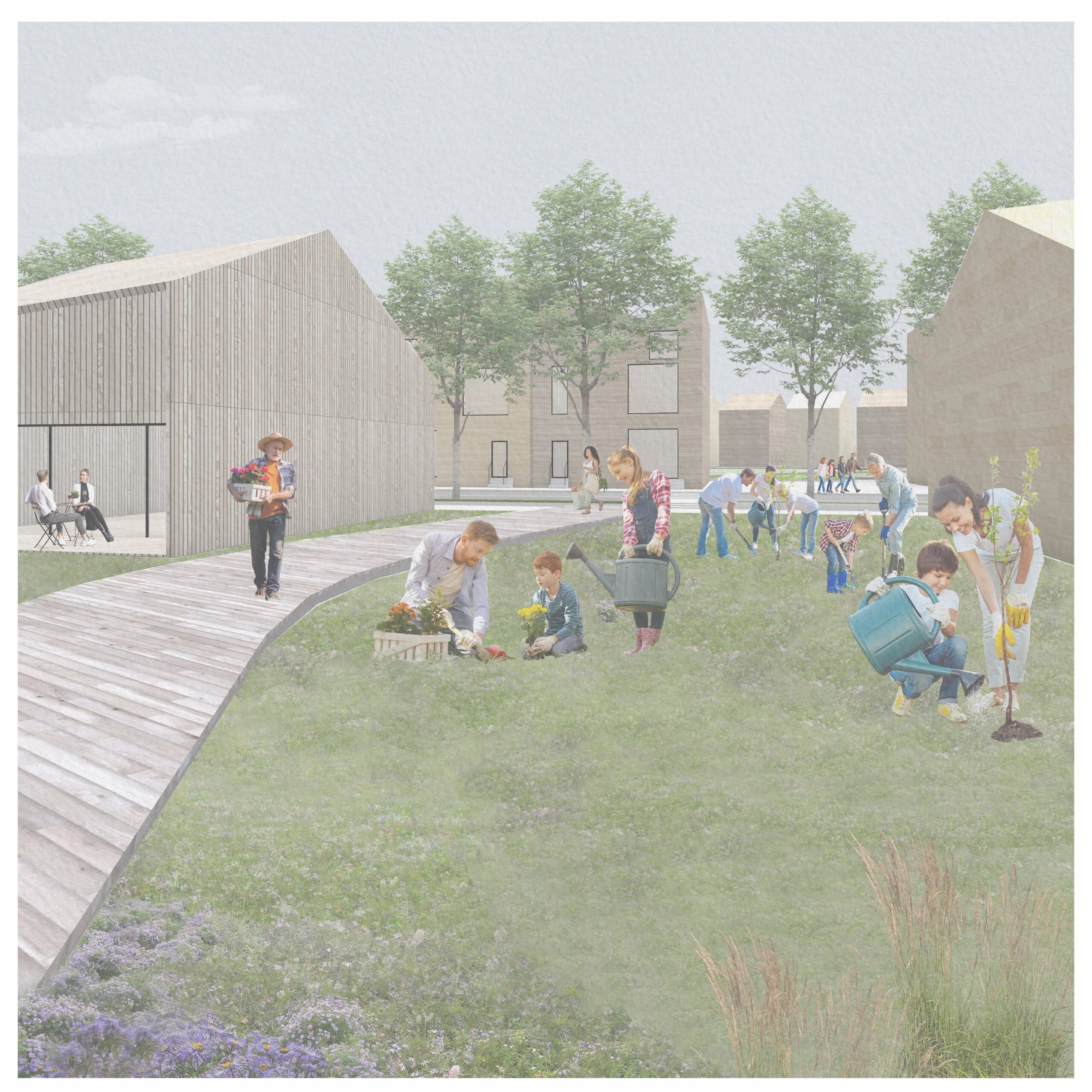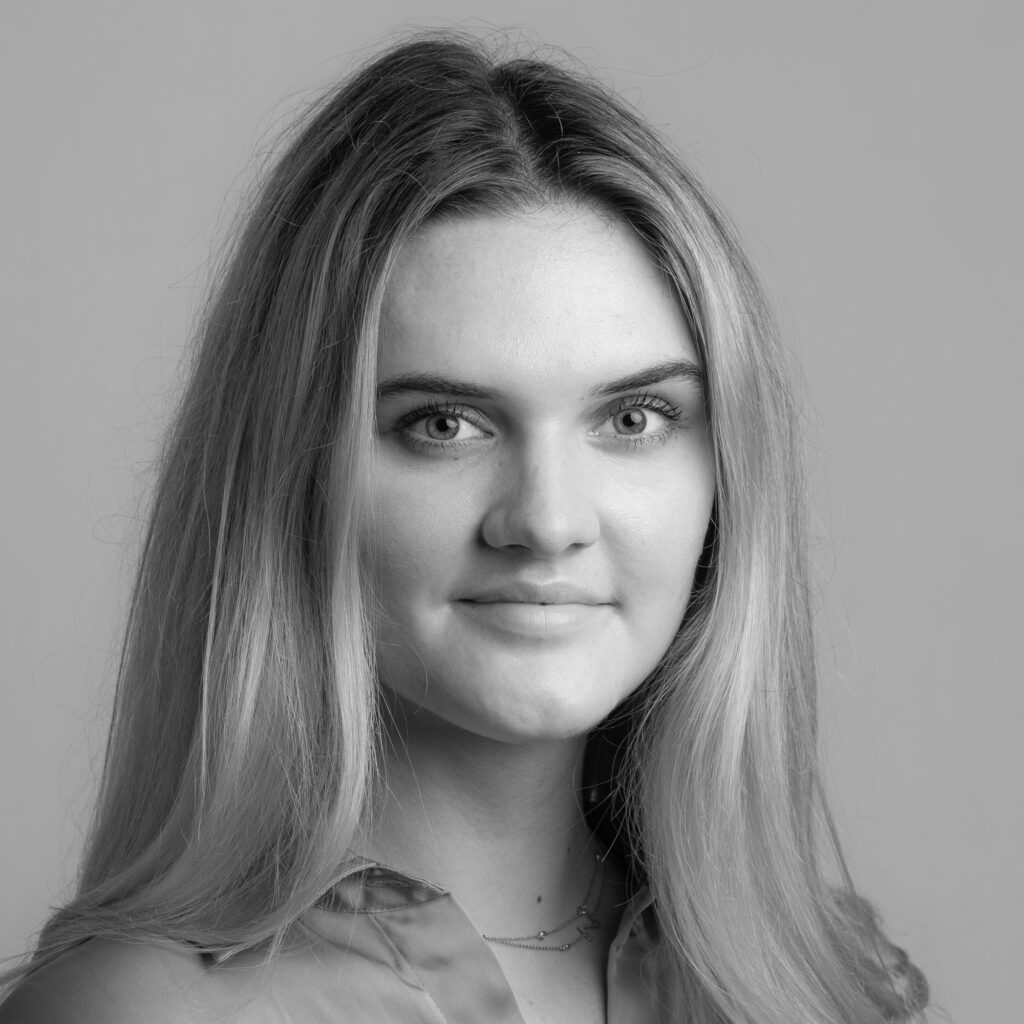
Zoe Jackson
University of Southern California
Instructor / Advisor: Eric Nulman
Spring Street proposes an urban planning strategy for mixed-use developments that privileges open space while maintaining local zoning density and restoring native plants to the site. The site for this specific project is the AES power plant in Redondo Beach, CA slated to shut down operations soon. This Spring Street proposal weaves a commercial street through the site, increasing harbor frontage and views. Backyard fields created through the privileging of open space each cater to different butterflies and native animals, returning green space to the densely zoned Hermosa and Redondo areas. While this project focuses on the local re-establishment of the El Segundo Blue Butterfly, Spring Street aims to establish a new typology for urban development that contributes to new development while conscientiously restoring local environments.
Spring Street
Spring Street proposes an urban planning strategy for mixed-use developments that privileges open space while maintaining local zoning density and restoring native plants to the site. The site for this specific project is the AES power plant in Redondo Beach, CA slated to shut down operations soon. Upon looking at its surrounding context, the specific environmental condition this project focuses on is the restoration of native plants in order to restore the El Segundo Blue Butterfly’s habitat to the area. The AES power plant once bordered the coastal dunes, yet the only preservation of these dunes is in a singular El Segundo Blue Butterfly Preserve at LAX. By restoring native plants to the site, the former power plant would be the missing link in the broken network of existing neighboring preserves and small community butterfly gardens, bringing enough native vegetation to the coast to enable the El Segundo Blue Butterfly to spread back out along the coast.
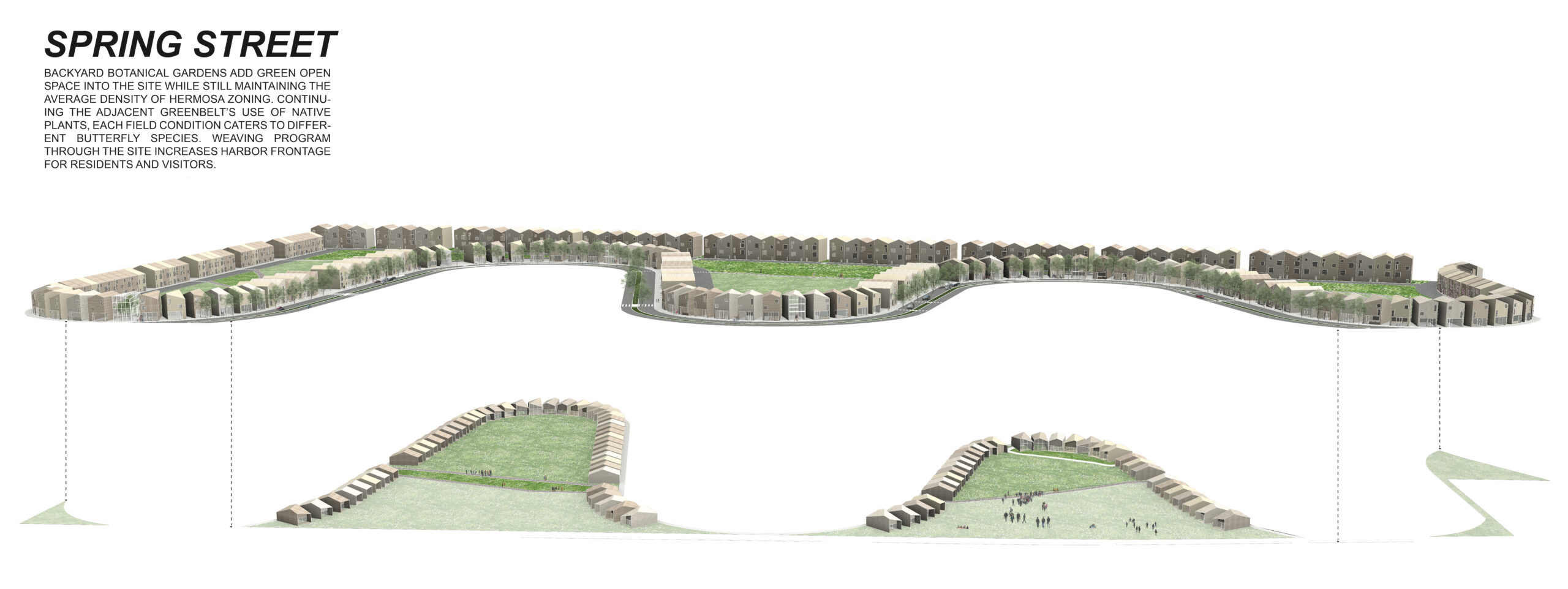
This Spring Street proposal weaves a commercial street through the site, increasing harbor frontage and views. The geometry of the street is informed by ideal vehicular turning radii for slow speeds effectively curating a neighborhood street experience. The looping street incorporates nodes of commercial space at each bend in the road. The curvature of the street achieves different experiential conditions for visitors and residents. As one rounds the bend of the street, the straight expanse of residential buildings turns into a bustling commercial condition of retail and restaurants formerly hidden from view by the curve.

Drawing from the site’s context, Spring Street connects with the adjacent Hermosa Valley Greenbelt and maintains the zoning density of its surrounding district. In maintaining Hermosa’s density this scheme adds more open space to the city without proposing less housing than the typical Hermosa zoning plan would create. Single-family homes line the frontage side of the curving street while taller townhomes line the backyard fields, maximizing the number of units with views. The roofs of the buildings appear angled atypically, yet from the harbor street they create conventionally sloped roof profiles in order to recall a neighborhood scale.
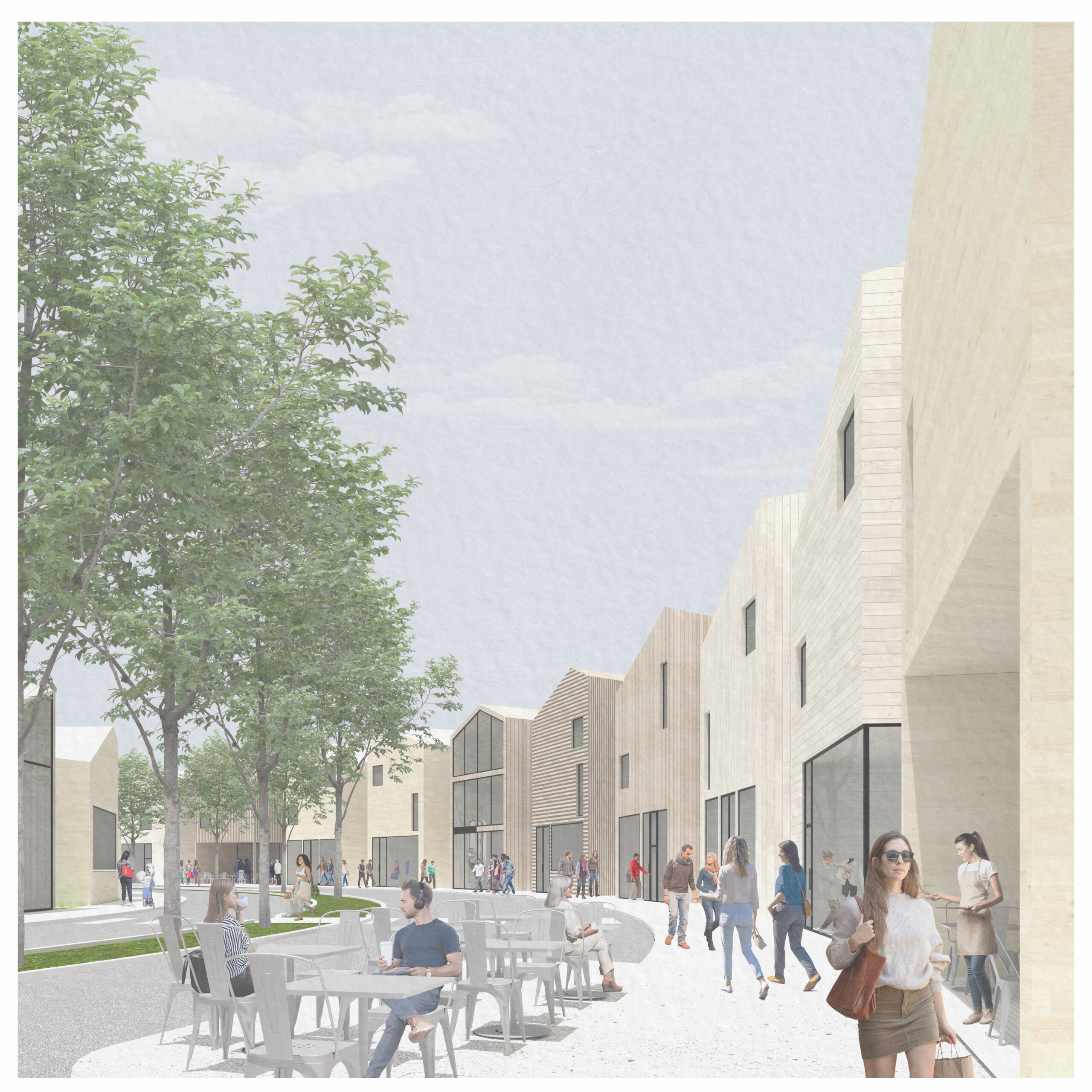
Backyard fields created through the privileging of open space each cater to different butterflies and native animals, returning green space to the densely zoned Hermosa and Redondo areas. These backyard botanical gardens have boardwalks weaving through them for circulation. Their paths recall the site’s history predating the power plant by following the contours of the site’s original salt pond. The fields would be landscaped with milk vetch, zinnias, and asters to sustain the El Segundo Blue Butterfly and other species of butterflies throughout varying seasons. In addition, small community gardens would fill the lots between townhouses to foster socialization and attract other species of butterflies with agricultural plants.
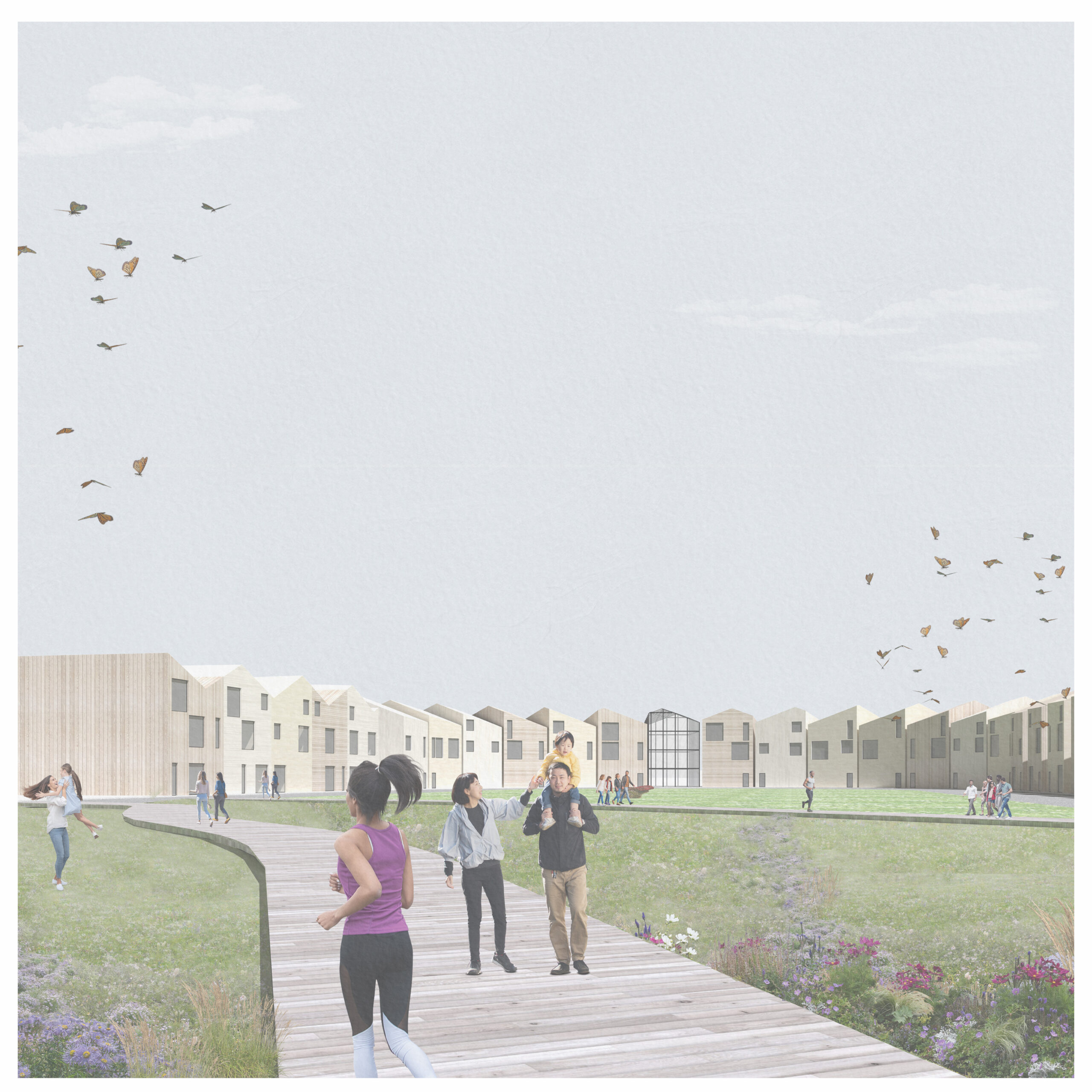
Spring Street aims to establish a new typology for urban development that contributes to new development while conscientiously restoring local environments. While Spring Street focuses on the local specialization of the El Segundo Blue Butterfly, the strategy of creating backyard botanical gardens to restore local wildlife and simultaneously create profitable housing developments can be applied elsewhere.
